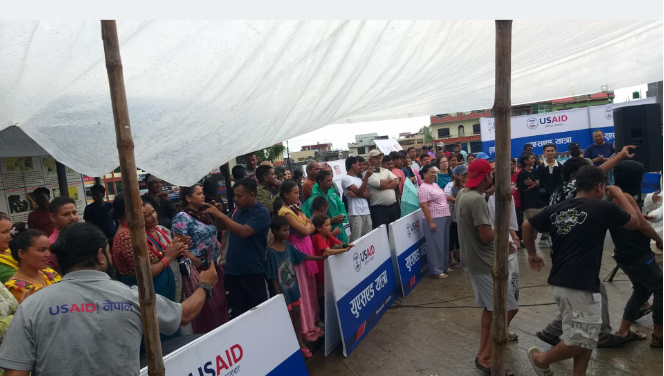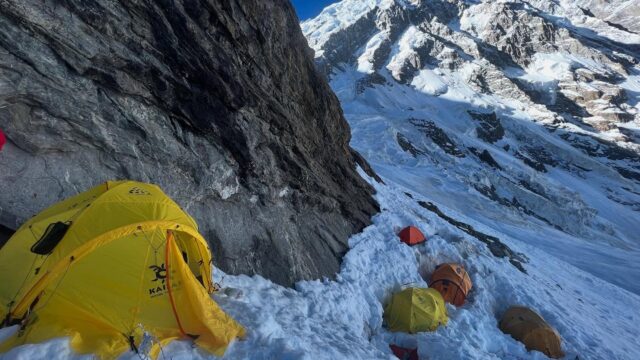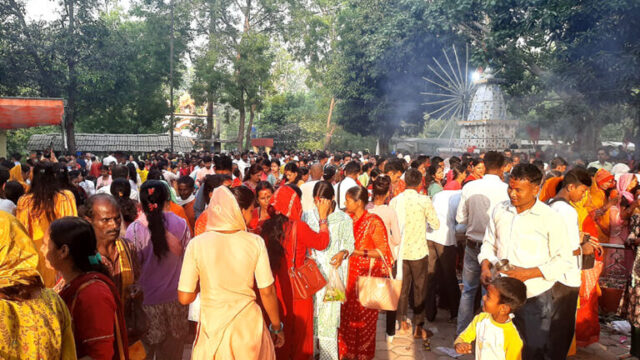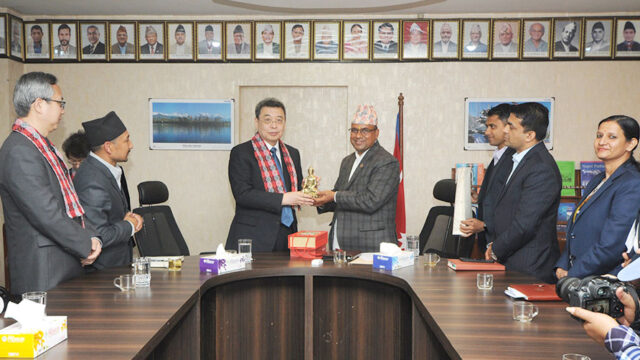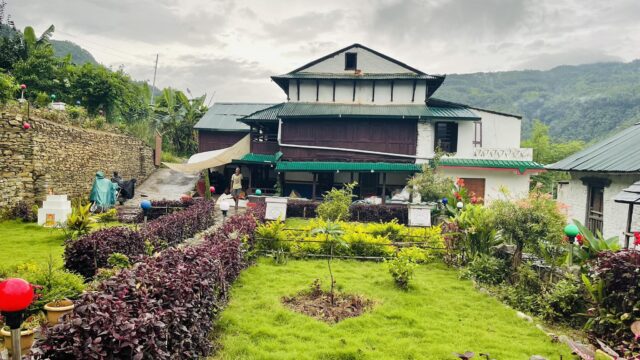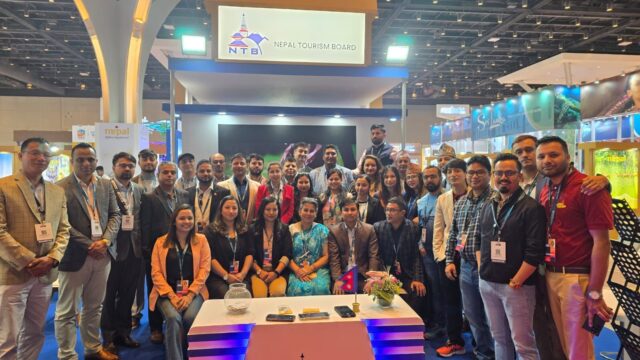A recent set of informative events was held in Lamahi, Dang district, Lumbini Province by the United States Agency for International Development (USAID) to inform the public about the agency’s lengthy 63-year history of development work in Nepal.
Locals were involved in a cultural program that included performances by local talent, such as vocalist Afsar Ali, at the event, which took place at Lamahi’s bus park. Enthusiastic spectators flocked to take part in interactive games like “spin the wheel” and quizzes led by emcee Suman Shrestha, despite the monsoon rains. The purpose of these initiatives was to raise public awareness of USAID’s long-standing collaboration with Nepal.
Similar activities are planned as part of USAID’s ongoing outreach campaign in Kohalpur, Banke district, today and in Nepalgunj on Tuesday.
USAID kicked off their roadshow in Lumbini Province last weekend with activities in Badganga, Jitpur, and Rupandehi districts, and a colorful cultural celebration in Butwal. Presently, 20 national and local programs about health, education, economic development, environmental resilience, democracy, human rights, and good governance are supported by USAID throughout the province.
Community health worker Santoshi KC emphasized at the occasion that USAID provides grant-based help rather than loans, which she experienced in her job. She reported observable gains in women’s and children’s health and education as a result of USAID-funded projects in her district.
Hemanta Giri, who first saw USAID in grade 9 textbooks, expressed his renewed respect for the organization throughout the event’s interactive activities.
Sunita Gharti Magar, who was there with her little daughter, took in the music and learned about USAID-supported initiatives that help women and children in her community. As she considered the effects, she recognized that she was one of the millions of people who had benefited directly and indirectly from USAID programs in Nepal.
Kunwar Singh Thapa, an elderly attendee, was enthralled with the historical exhibits and interactive booths that highlighted USAID’s development-related contributions to Nepal. The increases in life expectancy, child mortality rates, and literacy brought about by USAID’s $1.5 billion investment since 2000 astounded him.
Representatives from USAID also emphasized their aid to Nepal during the COVID-19 pandemic, including vaccinations, protective gear, and technical support. They highlighted USAID’s contribution to the national promotion of peace and democracy as well as the eradication of malaria in the southern Terai.
The passionate involvement of the Lamahi community demonstrated the significant influence of USAID’s ongoing assistance in influencing Nepal’s development landscape and enhancing living standards throughout the nation.
